Post Pop: Saatchi Gallery’s latest show reflects on what happened after Warhol
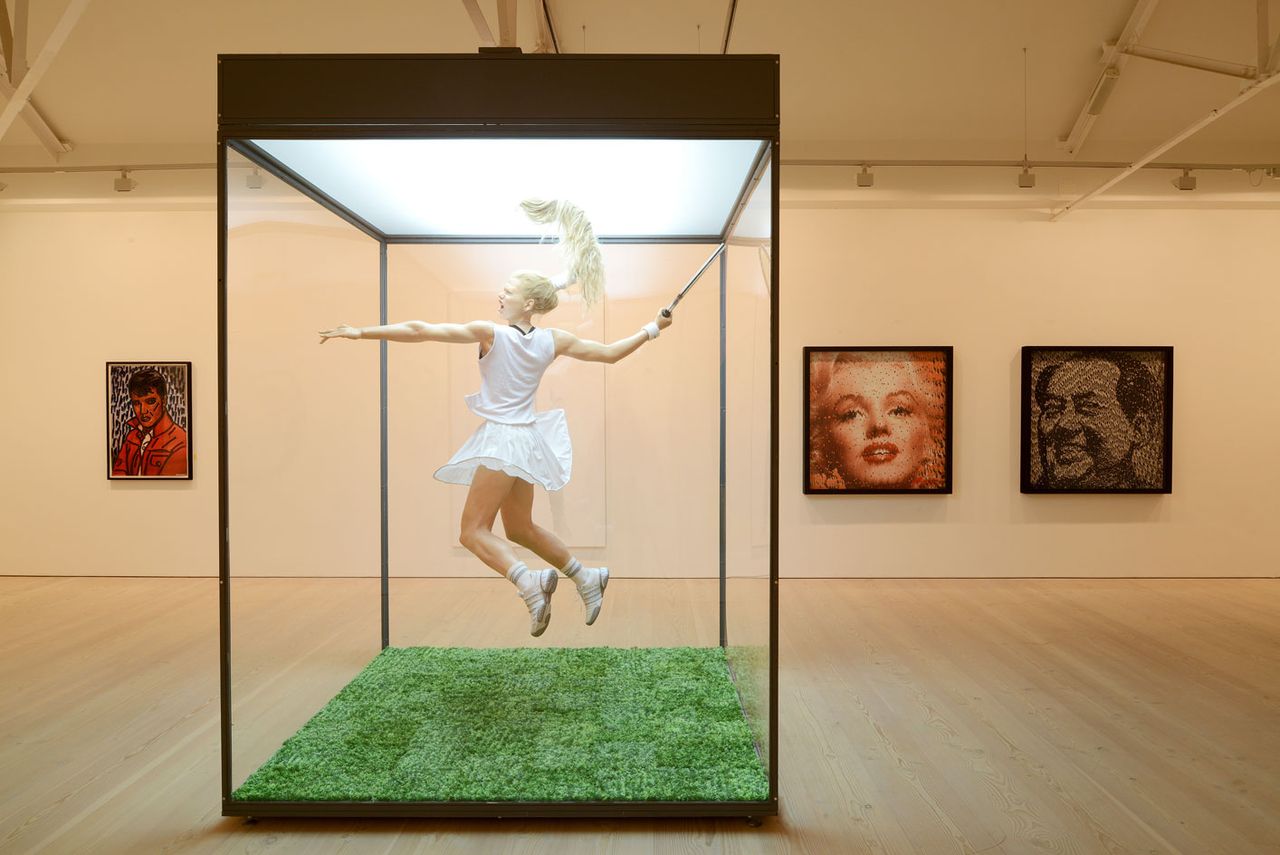
An artist from China or Russia in the years following Glasnost and economic reform wouldn't have had much in common with his counterpart in the UK or US. Certainly the ideological links between those nations would have been tenuous at best. What they did share was a keen awareness of the imagery that besieged them - from bookshops, billboards and buildings of church and state - and the pop artists who exploited it.
In the East, people whose lives were strongly dictated were suddenly expected to think for themselves. Meanwhile in the West, people long expected to think for themselves were being told what to do and think. The disillusionment felt by artists coming of age at that time spawned a legacy of highly charged late-pop art.
That work is the subject of a far-reaching exhibition opened this week at London's Saatchi Gallery. Assembled by curators representing Russia, China and Taiwan, as well as the UK and US, 'Post Pop: East Meets West' features 250 works from three decades following the heyday of pop art.
It opens with a false sense of serenity in the monochrome 'Habitat' section, dominated by Ai Weiwei's 'Sofa in White', a replica of the standard-issue Chinese tufted armchair cast in marble, denying the comfort it's meant to offer. Bill Woodrow's 'Hoover Breakdown' references the mood of the modern housewife with a scattering of vacuum parts headed for the fan of a larger model. Richard Woods' recent 'Nature Making' portrays the act of destroying trees in the name of 'natural' furniture. Mounted on a whitewashed brick wall is Rachel Whiteread's 'Untitled (Black Books)', painted over in matt black so that nothing can be learned from it - least of all about the owner.
Soon enough, however, the bleeps of a Mao Zedong-themed video game crescendo and the branding appears: Jeff Koons' Spalding basketballs; Tom Sachs' 'Nutsy's McDonald's', assembled with visible nuts and bolts, including instructions on how to cook a 'prefab' meal. Alexander Kosolapov, luminary of Russia's sots art, or Soviet pop art, movement, presents a trinity of faceless Madonnas upstaged by a grid of caviar labels.
You'd think a generation of artists raised in the relative absence of religion would have escaped the pull of iconography. But therein lies the conflict in 'Ideology & Religion', perhaps the show's strongest section. If you're not scared straight by 'Die Harder', a screaming steel crucifix spiked with coat hangers by Turner Prize-nominee David Mach, you will be by the 12 shrouded figures worshipping at the altar of carved-wood toast slices by Anatoly Osmolovsky.
Further up the building the art goes increasingly meta, reproducing genres as disparate as classical Greek sculpture, English romantic, even pop art. After the umpteenth Warhol nod, the homage begins to wear thin - as does the line between the gallery proper and the second-floor gift shop. Perhaps this is the desired effect. At this time of year, does it matter?
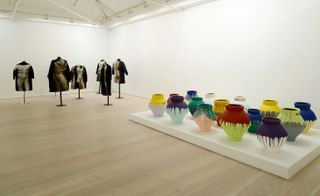
The highly charged works have been assembled by curators representing Russia, China and Taiwan, as well as the UK and US, demonstrating the far-reach of this pivotal art movement. Pictured are 'Friends and Neighbours' (left), by Irina Nakhova, 1994, and 'Coloured Vases', by Ai Weiwei, 2007-10
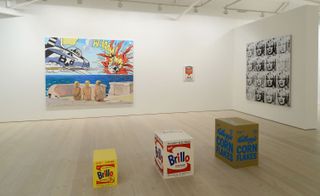
The exhibition is split into six themes: 'Habitat'; 'Advertising and Consumerism'; 'Celebrity and Mass Media'; 'Art History' (pictured); 'Religion and Ideology'; and 'Sex and the Body'
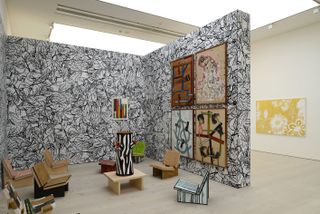
Richard Woods' recent 'Nature Making' portrays the act of destroying trees in the name of 'natural' furniture
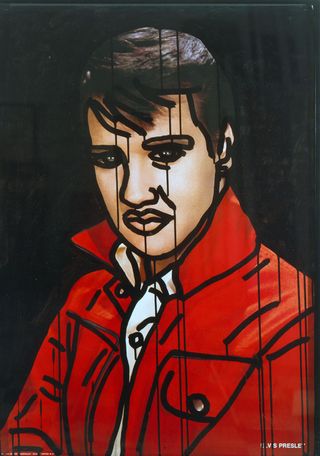
'Elvis Presley', by Keith Haring, 1981. © Keith Haring Foundation
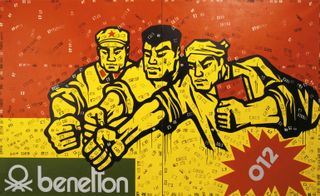
'Great Criticism: Benetton', by Wang Guangyi, 1992. © The artist
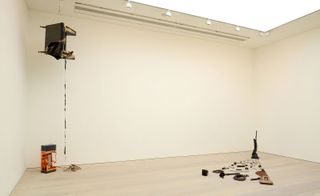
Bill Woodrow's 'Hoover Breakdown', 1979, references the mood of the modern housewife with a scattering of vacuum parts headed for the fan of a larger model
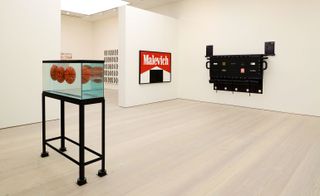
The packaging and branding synonymous with pop art is represented through Jeff Koons' 'Three Ball Total Equilibrium Tank' and Alexander Kosolapov's 1987 work 'Malevich - Black Square'
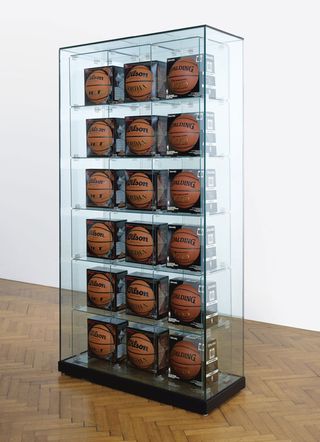
'Encased - Three Rows', by Jeff Koons, 1983-1993/98. © The artist
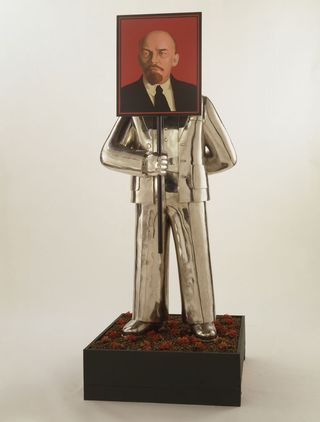
'Man with Portrait of Lenin', by Grisha Bruskin, 1990, from the series 'Paradise Lost'. © The artist
ADDRESS
Saatchi Gallery
Duke of York's HQ
King's Road
London SW3 4RY
Wallpaper* Newsletter
Receive our daily digest of inspiration, escapism and design stories from around the world direct to your inbox.
Based in London, Ellen Himelfarb travels widely for her reports on architecture and design. Her words appear in The Times, The Telegraph, The World of Interiors, and The Globe and Mail in her native Canada. She has worked with Wallpaper* since 2006.
-
 ICON 4x4 goes EV, giving their classic Bronco-based restomod an electric twist
ICON 4x4 goes EV, giving their classic Bronco-based restomod an electric twistThe EV Bronco is ICON 4x4’s first foray into electrifying its range of bespoke vintage off-roaders and SUVs
By Jonathan Bell Published
-
 ‘Dressed to Impress’ captures the vivid world of everyday fashion in the 1950s and 1960s
‘Dressed to Impress’ captures the vivid world of everyday fashion in the 1950s and 1960sA new photography book from The Anonymous Project showcases its subjects when they’re dressed for best, posing for events and celebrations unknown
By Jonathan Bell Published
-
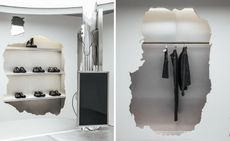 Inside Camperlab’s Harry Nuriev-designed Paris store, a dramatic exercise in contrast
Inside Camperlab’s Harry Nuriev-designed Paris store, a dramatic exercise in contrastThe Crosby Studios founder tells Wallpaper* the story behind his new store design for Mallorcan shoe brand Camperlab, which centres on an interplay between ‘crushed concrete’ and gleaming industrial design
By Jack Moss Published
-
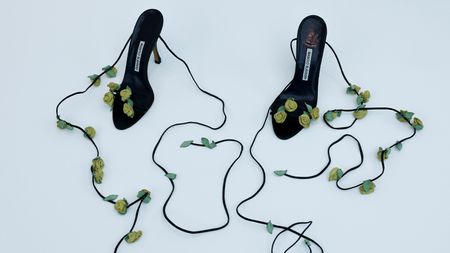 Saatchi Gallery is in full bloom with floral works from Vivienne Westwood, Marimekko, Buccellati and more
Saatchi Gallery is in full bloom with floral works from Vivienne Westwood, Marimekko, Buccellati and more‘Flowers – Flora in Contemporary Art & Culture’ at Saatchi Gallery, London, explores the relationship between creatives and their floral muses, and spans from fashion and jewellery to tattoos
By Tianna Williams Published
-
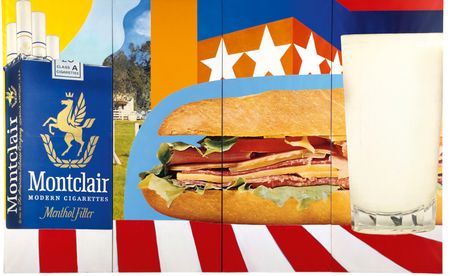 Tom Wesselmann’s enduring influence on pop art goes under the spotlight in Paris
Tom Wesselmann’s enduring influence on pop art goes under the spotlight in Paris‘Pop Forever, Tom Wesselmann &...’ is on view at Fondation Louis Vuitton in Paris until 24 February 2025
By Ann Binlot Published
-
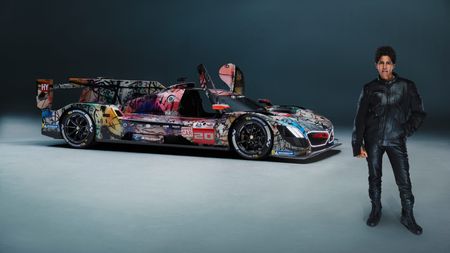 Julie Mehretu is the latest artist to transform a BMW racing car into a dynamic artwork
Julie Mehretu is the latest artist to transform a BMW racing car into a dynamic artworkThis is the 20th BMW Art Car, a BMW M Hybrid V8 racecar that’ll take to the track at Le Mans with a livery created by artist Julie Mehretu
By Nargess Banks Published
-
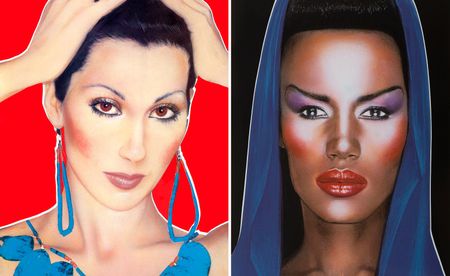 Richard Bernstein's bold covers for Andy Warhol's 'Interview' magazine go on show in New York
Richard Bernstein's bold covers for Andy Warhol's 'Interview' magazine go on show in New YorkBernstein's portraits of stars, including Cher, Stevie Wonder, Fran Lebowitz, Mick Jagger and Grace Jones can be seen at Neuehouse, Manhattan.
By Hannah Silver Published
-
 Esther Mahlangu’s first retrospective features the iconic BMW 525i Art Car
Esther Mahlangu’s first retrospective features the iconic BMW 525i Art CarEsther Mahlangu showcases ‘Then I knew I was good at painting’ at the Iziko Museums of South Africa in Cape Town
By Nargess Banks Published
-
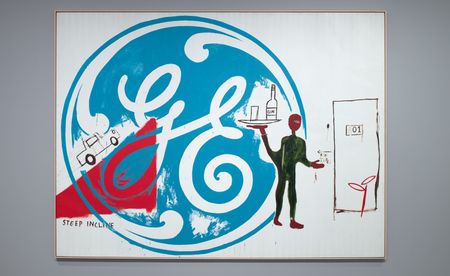 Jean-Michel Basquiat and Andy Warhol’s fruitful partnership explored in Paris
Jean-Michel Basquiat and Andy Warhol’s fruitful partnership explored in ParisFondation Louis Vuitton presents ‘Basquiat x Warhol. Painting 4 Hands’, exploring the collaboration between the two artists
By Hannah Silver Last updated
-
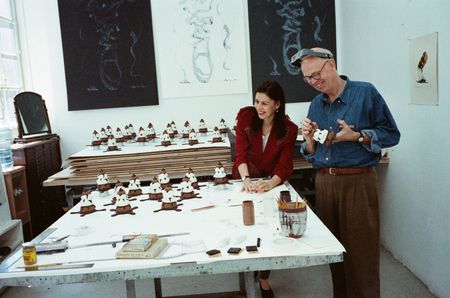 The dynamic duet of Claes Oldenburg and Coosje van Bruggen
The dynamic duet of Claes Oldenburg and Coosje van BruggenRemembering Claes Oldenburg, who died aged 93 on 18 July 2022, we revisit our 2021 article celebrating his partnership with Coosje van Bruggen, as the duo’s final work together, Dropped Bouquet, was realised and exhibited at Pace New York’s ‘Claes & Coosje: A Duet’
By Harriet Lloyd-Smith Last updated
-
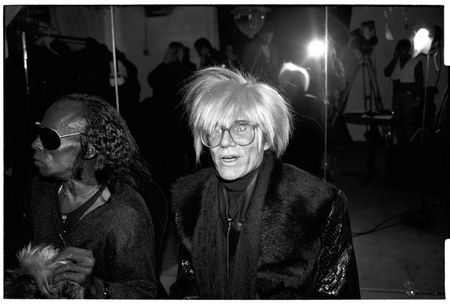 The Andy Warhol Diaries on Netflix reveals his enduring impact on contemporary art
The Andy Warhol Diaries on Netflix reveals his enduring impact on contemporary artWe review the new documentary, and showcase Warhol’s impact on modern culture through three artists: Deborah Kass, Jeff Koons and Glenn Ligon
By Harriet Lloyd-Smith Published